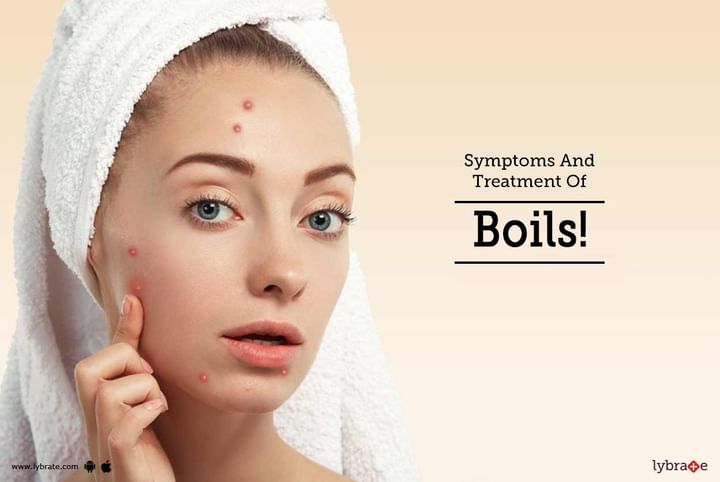Symptoms And Treatment Of Boils!
Boils are a bacterial infection that inflames the hair follicles. They are usually painful and filled with pus. Boils appear as red lumps and quickly fill with pus as days go by. They eventually rupture and drain. A cluster of boils at the same place or in patches is known as a carbuncle. In case a single boil makes an appearance in any part of the body, it should not rupture as it can quickly spread the infection in other parts of the body as well.
Symptoms:
Boils mainly occur in areas such as armpits, thighs, face, neck and buttocks. Their appearance mainly occurs in places covered with hair and tends t
o sweat a lot. Some of the common symptoms include red bump the size of a pea, reddish appearance of the skin near the bump, increase in size of the structure and eventually rupturing.
When to consult a doctor?
A doctor must be visited when there is more than one boil in a particular area. Some other areas of concern include:
-
If the size of a boil is more than 5 centimetres.
-
If the boil causes fever.
-
If the boil doesn’t heal in more than a couple of weeks.
-
If the boils increase in size and become extremely painful.
-
If the boil appears on the face.
Risk Factors of Boils:
Boils are caused by a bacterium known as Staphylococcus aureus. They get entry to the skin where it is broken. Some of the common risk factors of this infection include diabetes, long-term infection, weakened immune system and other skin infection such as eczema, and acne.
Diagnosis:
A doctor is likely to diagnose boils just by having a look at it. In the case of any confusion, he might send the sample to a pathology lab for the purpose of testing. It is most likely to happen when the boil isn’t responding to any treatment. In case the boil becomes resistant to standard treatment, a doctor might take a different course of action.
Treatment:
Boils can be treated at home itself with a warm compressor. It not only relieves pain but helps in natural damage. If the boil doesn’t go away, a dermatologist must be consulted. On consultation, the dermatologist can make an incision in the infected area in order to drain the pus. For deep infections, the pus is drained with the help of sterile gauze. In case the boil is severe in nature, a doctor prescribes antibiotics to heal the infected area. For prevention, it should be ensured that the hand is washed frequently and especially so before a meal. The wound should be covered at all times and personal belongings should not be shared.



+1.svg)
